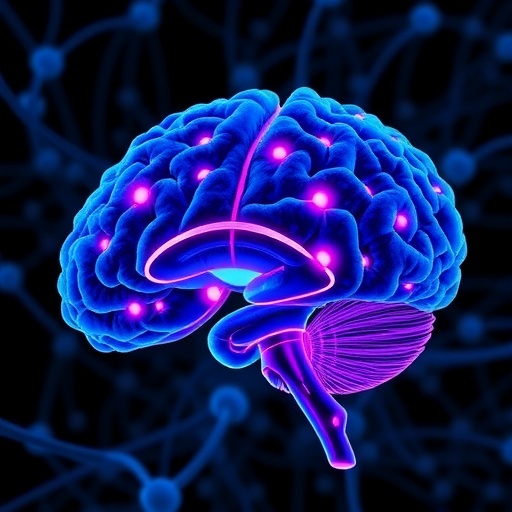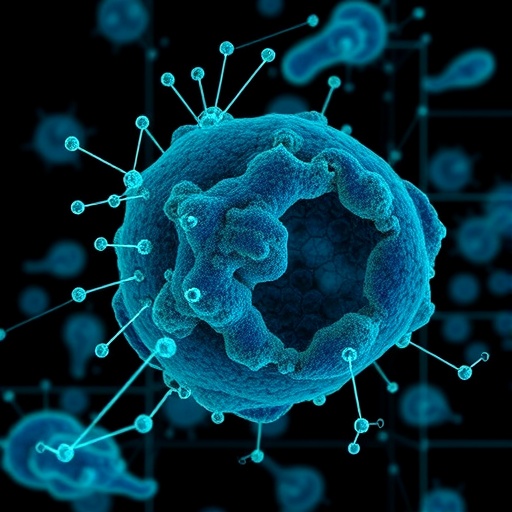A groundbreaking new compound named SHP1705 is generating excitement in the fight against glioblastoma, the most aggressive and lethal brain tumor diagnosed in adults today. Building on years of research into circadian biology, this novel agent specifically targets circadian clock proteins that glioblastoma stem cells exploit to fuel their relentless growth and survival. Unlike previous therapeutic avenues, SHP1705 offers a precision strategy by selectively reactivating and enhancing a cryptochrome protein variant known as CRY2, effectively disrupting the cancer cells’ internal timekeeping apparatus without undue harm to normal brain tissue. These findings not only provide a fresh and promising angle in glioblastoma treatment but also represent a pioneering example of circadian clock-targeted drug development reaching clinical trial milestones.
Glioblastoma multiforme remains one of the most daunting challenges in neuro-oncology, characterized by its rapid progression, therapeutic resistance, and inevitable recurrence following standard interventions such as surgical resection, radiation, and temozolomide chemotherapy. Despite decades of research effort, overall survival rates have painfully stagnated, reinforcing the urgent need for innovative therapeutic strategies that address the underlying mechanisms driving tumor growth and treatment evasion. Central to this emerging paradigm is the role of circadian clock proteins—molecular components that regulate the body’s intrinsic 24-hour rhythms and influence pivotal cellular processes including metabolism, cell cycle progression, and DNA repair. Glioblastoma stem cells, a subpopulation believed to be responsible for tumor initiation, maintenance, and relapse, have been shown to hijack these clock proteins to sustain their malignant phenotypes.
Preclinical investigations have meticulously validated SHP1705’s efficacy against glioblastoma stem cells derived from patient tumors. These studies included both cell lines sensitive to standard chemotherapy and those resistant to temozolomide, highlighting SHP1705’s capacity to target even the most treatment-refractory cancer populations. Cellular assays revealed a marked diminution in stem cell survival, while animal xenograft models demonstrated significant tumor growth retardation and survival extension at higher compound dosages. Moreover, when combined with radiation therapy, SHP1705 heightened the vulnerability of cancer cells to radiation-induced death, suggesting synergy with existing treatment modalities.
Crucially, SHP1705 has transcended the preclinical phase to complete a human phase 1 clinical trial, the first-ever for a circadian clock-targeting drug. Conducted by Synchronicity Pharma, the biotech startup co-founded by Steve A. Kay, PhD, these trials enrolled 54 healthy volunteers and demonstrated that SHP1705 was generally safe and well tolerated. The adverse event profile was minor, limited mainly to headaches and nausea, showing that the compound’s modulation of circadian proteins is feasible without major toxicity. This milestone is not only a testament to the drug’s safety but also a beacon of hope for patients facing glioblastoma’s grim prognosis.
The involvement of high-profile researchers such as Dr. Steve A. Kay, a leading figure in circadian biology and neuro-oncology, and Dr. Jeremy Rich, an expert in glioblastoma stem cells, reflects the interdisciplinary innovation driving this research. Their collaborative international team spans multiple institutions, encompassing experts in molecular biology, pharmacology, neuro-oncology, and clinical trials design, providing a comprehensive approach to addressing glioblastoma’s complexity. The infusion of funding from prestigious bodies including the National Institutes of Health, Japan Society for the Promotion of Science, and the Charlie Teo Foundation further substantiates the high scientific and clinical value attributed to this project.
Beyond disrupting tumor cell replication, hijacked circadian proteins may exert additional oncogenic influences by suppressing the immune microenvironment’s anti-tumor activity and promoting the formation of blood vessels that sustain tumor growth. Investigations are underway to unpack these mechanisms, which could reveal further therapeutic targets within the circadian clock circuitry. Such insights could accelerate the development of combinatory treatments that not only cripple tumor cell growth but also enhance immune system engagement and inhibit angiogenesis, tackling glioblastoma on multiple fronts.
In sum, SHP1705 epitomizes a transformative leap in glioblastoma therapeutics, harnessing the fundamental biology of circadian clocks to undermine the cellular machinery that cancer stem cells rely on. This precision medicine approach, reinforced by robust preclinical data and encouraging early clinical safety results, stands to significantly reframe how we think about treating one of the most intractable brain cancers. As research progresses, the scientific community and patients alike are poised to witness the emergence of a new class of drugs that integrate chronobiology and oncology, signaling hope for improved survival and quality of life.
Subject of Research: People
Article Title: Advancing clinical response against glioblastoma: Evaluating SHP1705 CRY2 activator efficacy in preclinical models and safety in phase I trials
News Publication Date: 1-Apr-2025
Web References: http://dx.doi.org/10.1093/neuonc/noaf089
References: Kay, S.A., Rich, J., Chan, P., et al. Neuro-Oncology, 2025
Keywords: Glioblastomas, Cancer, Circadian pathway, Drug candidates, Drug development, Brain cancer, Cryptochromes, Cancer stem cells, Glioblastoma cells, Clinical trials
Tags: brain tumor survival ratescircadian biology in oncologycircadian clock proteins cancerCRY2 protein variant glioblastomadrug development clinical trialsglioblastoma stem cellsinnovative cancer therapiesneuro-oncology challengesprecision medicine brain tumorsSHP1705 glioblastoma treatmenttargeted cancer therapiestherapeutic resistance glioblastoma





